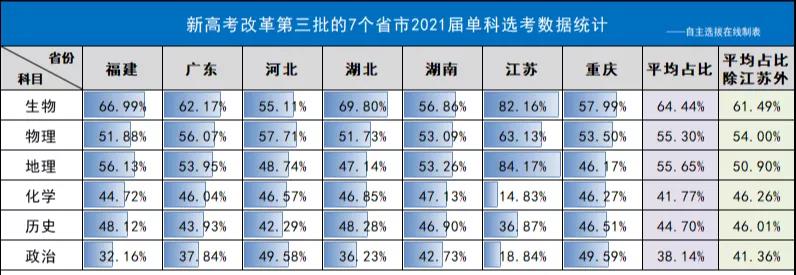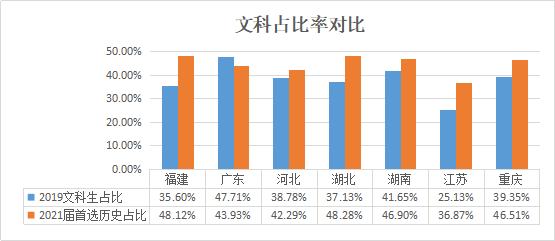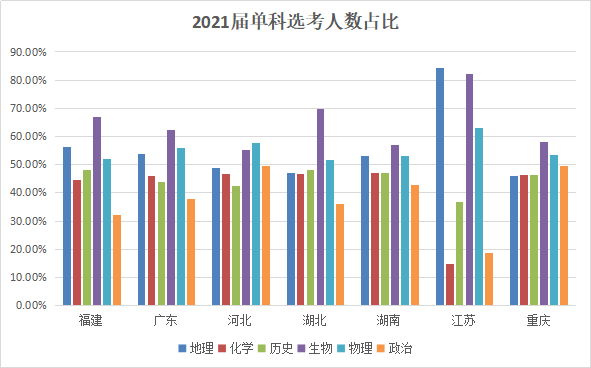Unit Eleven
Passage 2
Personality is, to a large extent, inherent—A-type parents, usually bring about A-type children. But the environment must also have a 11 effect, wince if competition is important to the parents it is likely to become a major 12 in the lives of their children.
One place where children soak up A charACTeristics is school, which is, by its very nature, a highly competitive institution.Too many schools 13 the " win at all costs" moral standard and measure their success by sporting achievements. The current 14 for making children compete against their classmates or against the clock produces a two-layer system, in which competitive A types seem in some way better than their B-type fellows. Being 15 keen to win can have dangerous consequences: remember that Pheidippides, the first marathon runner, dropped dead seconds after saying; "cheers, we conquer!"
By far the worst form of competition in schools is the extreme 16 on examinations. It is a rare school that allows pupils to 17 on those things they do well. The merits of competition by examination are somewhat 18 , but competition in the certain knowledge of failure is positively harmful.
Obviously, it is neither 19 nor desirable that all A youngsters change into B's. The world needs types, and schools have an important duty to try to 20 a child's personality to his possible future employment. It is top management.
A. enough B. fit C. emphasis D. prACTical E. innumerable F. concentrate G. adopt H. questionable
I. profound J. fACTor K. too L. substance M. passion N. emotion O. fix
UNIT 12
Passage 2
As the 11 of life continues to increase, we are fast losing the art of relaxation. Once you are in habit of rushing through life,being on the go from morning till night, it is hard to slow down. But relaxation is essential for a healthy mind and body.
Stress is a natural part of everyday life and there is no way to avoid it. In fACT, it is not the bad thing it is often 12 to be. A certain amount of stress is 13 to provide motivation and give purpose to life. It is only when the stress gets out of control that it can lead to poor 14 and ill health.
The amount of stress a person can 15 depends very much on the individual. Some people are not afraid of stress, and such charACTers are 16 prime material for managerial responsibilities. Others lose heart at the first signs of 17 difficulties. When exposed to stress, in whatever form, we reACT both chemically and physically. In fACT we make choice between "fight" or "flight" and in more primitive days the choices made the difference between life or death. The crises we meet today are unlikely to be so 18 , but however little the stress, it involves the same response. It is when such a reACTion lasts long, through continued 19 to stress, that health becomes endangered. Such serious conditions as high blood pressure and heart disease have established links with stress. Since we cannot 20 stress from our lives(it would be unwise to do so even if we could) , we need to find ways to deal with it.
A. cancel B. pace C. extreme D. automatically E. remove F. vital G. performance H. supposed I. rate J. exposure K. achievement L. unusual M obviously N withstand O harsh
Unit Thirteen
Passage 2
What is your favorite color? Do you like yellow, orange, red? If you do, you must be an optimist, a leader, an ACTive person who 11 life, people and excitement. Do you prefer GREys and blues? Then you are probably quiet, shy, and you would rather follow than lead. You 12 to be a pessimist. At least, this is what psychologists tell us, and they should know, because they have been seriously studying the meaning of color preference, as well as the effect that colors have on human beings. They tell us, among other 13 , that we do not choose our favorite color as we grow up—we are born with our preference. If you happen to love brown, you did so, as soon as you opened your eyes, or at least as soon as you could see clearly.
Colors do 14 our moods—there is no doubt about it. A yellow room makes most people feel more cheerful and more relaxed than a dark GREen one; and a red dress brings warmth and cheer to the saddest winter day. On the other hand, black is 15 .A black bridge over the Thames River, near London, used to be the 16 of more suicides than any other bridge in the area—until it was repainted GREen. The number of suicide attempts immediately fell 17 ; perhaps it would have fallen even more if the bridge had been done in pink or baby blue.
Light and 18 colors make people not only happier but more ACTive. It is an 19 fACT that fACTory workers work better, harder, and have fewer 20 when their machines are painted orange rather than black or GREy.
A. bright B. scene C. wholly D. favor E. fACTs F. depressing G. accidents H. interfere I. established J. incidents K. disgusting L. sharply M. enjoys N. tend O. influence
Unit Fourteen
Passage 2
Women are also underrepresented in the administration and this is because there are so few women 11 professors. In 1985, Regent Beryl Milburn produced a report blasting the University of Texas System administration for not 12 women. The University was rated among the lowest for the system. In a 1587 update, Milburn 13 and praised the proGREss that was made and called for even more 14 One of the positive results from her study was a system-wide program to inform women of available administrative jobs.
College of Communication Associate Dean, Patricia Witherspoon, said it is important that woman be 15 when it comes to relocating if they want to 16 in the ranks.
Although a woman may face a chilly 17 on campus, many times in order for her to succeed, she must rise above the problems around her and concentrate on her work.Until women make up a GREater 18 of the senior positions in the University and all academia, inequalities will exist."Women need to spend their energies and time doing scholarly ACTivities that are important here at the University. "Spirduso said. "If they do that they will be 19 in this system. If they spend their time in little groups mourning the sexual discrimination that they think exists here, they are 20 wasting valuable study time. "
A. full B. recalled C. improvement D. rise E. encouraging F. flexible G. recognized H. idly I. ratio J. persuading K. movable L. possibly M. successful N. climate O. percentage
Unit Fifteen
Passage 2
In October 1987, the National Board for Professional Teaching Standards began its work to set new standards of accomplishment for the teaching profession and to improve the 11 of education available to all children in the United States.
Teachers are 12 to students and their learning. They must ACT on the belief that all students can learn. They must recognize 13 differences in their students and adjust their prACTice 14 . They must know that their mission extends beyond developing the cognitive capacity of their students. They must be 15 with their students' self-concept, with their motivation, and with the development of charACTer.
Teachers must know the subjects they teach and how to teach them. They must 16 specialized knowledge of how to convey a subject to students. Teachers are responsible for managing and monitoring student learning. They must call on 17 methods to meet their goals, knowing and being able to 18 a variety of instructional skills. Teachers must think systematically about their prACTice and learn from experience, seeking the 19 of others and drawing on education research and scholarship to improve their prACTice.
As members of learning communities, teachers contribute to school effectiveness by collaborating with other professionals. They take ___20 of community resources, cultivating knowledge of their school's community as a powerful resource for learning.
A. employ B. advice C. quantity D. committed E. command F. consulted G. manual H. approximately
I. concerned J. advantage K. multiple L. accordingly M. individual N. embrace O. quality
Unit Sixteen
Passage 2
If you are looking for information, library shelves are a good place to start. But if you need up-to-the-minute data or have specialized needs, you may find a computerized database more useful, less expensive, and less time 11 .A database, a file of information on one subject or family of subjects, can be stored and 12 in a computer's memory. The speed of the computer then 13 you to recall any item in this file almost 14 The three main types of databases are statistical, bibliographic, and full text. Statistical databases store 15 amounts of numerical data, such as wage and price indexes, census information, foreign 16 rates and bond prices. Bibliographic databases store references to and summaries of articles in periodicals and newspapers. Full-text databases offer the complex texts of such 17 as newspaper, magazine, and journal articles.
Thousands of databases exist today, and their numbers are growing. Many companies have their in-house database, which is 18 to employees through computer terminals or microcomputers. In addition, several hundred commercial databases are now available to the 19 , with literally millions of items of information readily obtainable. These databases 20 specific fields, such as law and financial forecasting, or general information, such as sports and weather data.
A. exchange B. public C. instantly D. cover E. enables F. consuming G. remained H. materials I. hide J. intensively K. vast L. communications M. exhausting N. accessible 0. maintained
Unit Seventeen
Passage 2
No one knows exACTly how many disabled people there are in the world, but 11 suggest the figure is over 450 million.The number of disabled people in India 12 is probably more than double the total population of Canada.
In the United Kingdom, about one in ten people have some disability. Disability is not just something that happens to other people: as we get older, many of us will become less 13 , hard of hearing or have failing eyesight. Disablement can take many forms and occur at any time of life. Some people are born with disabilities. Many others become disabled as they get older. There are many 14 disabling diseases. The longer time goes on, the worse they become.
Some people are disabled in accidents. Many others may have a period of disability in the form of a mental illness. All are affected by people's attitude towards them. Disabled people face many 15 barriers. Next time you go shopping or to work or to visit friends, imagine how you would 16 if you could not get up steps, or on to buses and trains. How would you cope if you could not see where you were going or could not hear the traffic? But there are other barriers; 17 can be even harder to break down and ignorance 18 represents by far the GREatest barrier of all. It is almost impossible for the able-bodied to fully appreciate what the severely disabled go through, so it is important to 19 attention to these barriers and show that it is the individual person and their ability, not their disability, which 20
A. inevitably B. evaluations C. estimates D. manage E. alone F. counts G. prejudice H. physical I. mobile J. indifferently K. withdraw L. proGREssive M. regular N. accounts O. draw
Unit Eighteen
Passage 2
Social customs and ways of behaving change. Things which were considered impolite many years ago are now 11 . Just a few years ago, it was 12 impolite behavior for a man to smoke on the street. No man who thought of himself as being a gentleman would make a 13 of himself by smoking when a lady was in a room.
Customs also differ from country to country. Does a man walk on the left or the right of a woman in your country? Or doesn't it 14 ? What about table manners? Should you use both hands when you are eating? Should you leave one in your lap, or on the table?
The Americans and the British not only speak the same language but also 15 a large number of social customs. For example, in both America and England people shake hands when they meet each other for the first time. Also, most Englishmen will open a door for a woman or offer their seat to a woman, and so will most Americans. 16 is important both in England and in America. That is, if a dinner invitation is for 7 o'clock, the dinner guest either arrives 17 to that time or calls up to explain his 18 The important thing to remember about social customs is not to do anything that might make other people feel uncomfortable— 19 if they are your guests. There is an old story about a man who gave a formal dinner party. When the food was served, one of the guests started to eat his peas with a knife. The other guests were amused or shocked, but the20 calmly picked up his knife and began eating in the same way.
A. especially B. attainable C. close D. delay E. considered F. host G. delivery H. Preparation I. share J. fool K. specifically L. acceptable M. matter N. Promptness 0. care
Unit Nineteen
Passage 2
The economy of the United States after 1952 was the economy of a well-fed, almost fully employed people. Despite 11 alarms, the country escaped any postwar depression and lived in a 12 of boom. An economic survey of the year 1955, a typical year of the 1950's, may be typical as 13 the rapid economic growth of the decade. The national output was 14 at 10 percent above that of 1954(1955 output was estimated at 392 billion dollars). The production of manufACTures was about 40 percent more than it had 15 in the years immediately following World War I . The country's business spent about 30 billion dollars for new fACTories and machinery. National income 16 for spending was almost a third GREater than it had been in 1950. Consumers spent about 256 billion dollars; that is about 700 million dollars a day, or about twenty-five million dollars every hour, all round the 17 . Sixty-five million people held jobs and only a little more than two million wanted jobs but could not find them. Only agriculture 18 that it was not sharing in the boom. To some observers this was a sad reflection of the mid-1920's. As farmers' share of their products 19 , marketing costs rose. But there were, among the observers of the national economy, a few who were not as confident as the majority. Those few seemed to fear that the boom could not last long and would 20 lead to the opposite—depression.
A. eventually B. averaged C. gradually D. state E. valued F. form G. declined H. occasional I. casual J. argued K. descended L. complained M. clock N. available O. illustrating
Unit Twenty
Passage 2
Growth of trade will depend GREatly on availability of energy sources. There may still be a trillion barrels of recoverable oil in the Middle East. But the oil crisis of 1974 has 11 to renewed interest in coal and to a search for 12 sources of energy. Solar, geothermal, and nuclear energy will play a large role in the years to come.
Solar energy is available in 13 forms. Buildings can be heated and cooled by direct use of solar radiation, crops and trees, which are the most efficient converters of sunlight into energy, can be grown for their energy potential, wastes can be burned as 14 , sunlight can be converted into DC (direct current) electricity, electric power can be 15 from the sun-warmed surface waters of the ocean, and lastly, solar radiation can be converted into heat that will drive electric power generators.
Serious problems still remain as to 16 and storage of solar energy.Geothermal energy is the energy contained within the earth. Heat is abundantly available deep in the earth's core and is constantly being produced. However, this heat is usually located at too deep a level for 17 exploitation. In short, very little is known on the use of geothermal energy, and it has 18 been exploited. Nuclear energy is produced in nuclear power plants. At these plants atoms of uranium are split, thus 19 masses of energy. Another source of energy under development is the nuclear fusion of certain atoms of hydrogen. This could eventually 20 natural gas as a source of energy.
A. rarely B. transformation C. fuel D. replace E. led F. alternative G. commercial H. briefly I. derived J. various K. relieving L. releasing M. transportation N. financial O. described
更多四六级内容请关注:长沙新东方四六级
了解新东方四六级课程信息请点击:四级 六级 考研





















 京公网安备11010802021790号
京公网安备11010802021790号









 学习资料
学习资料
